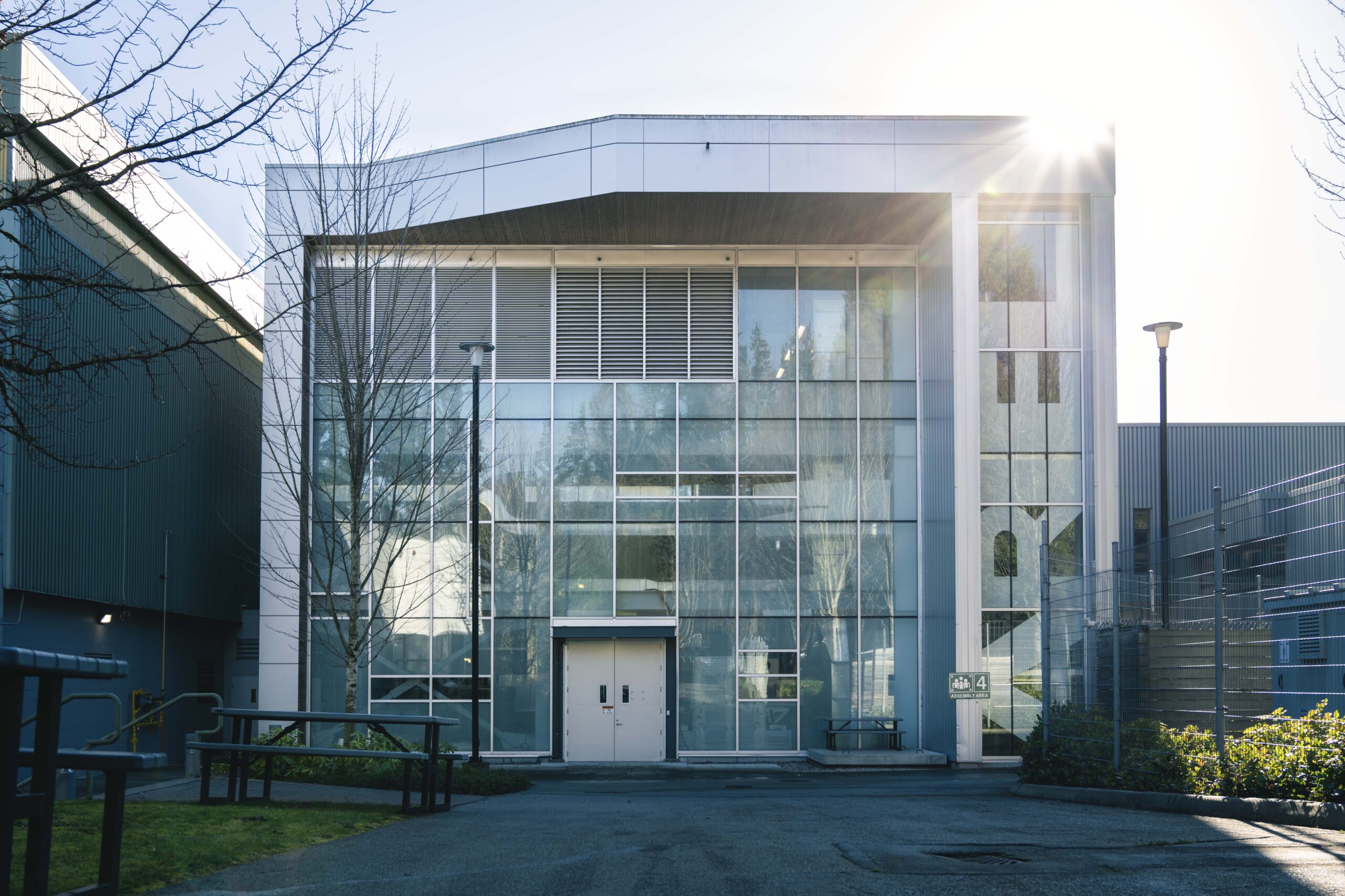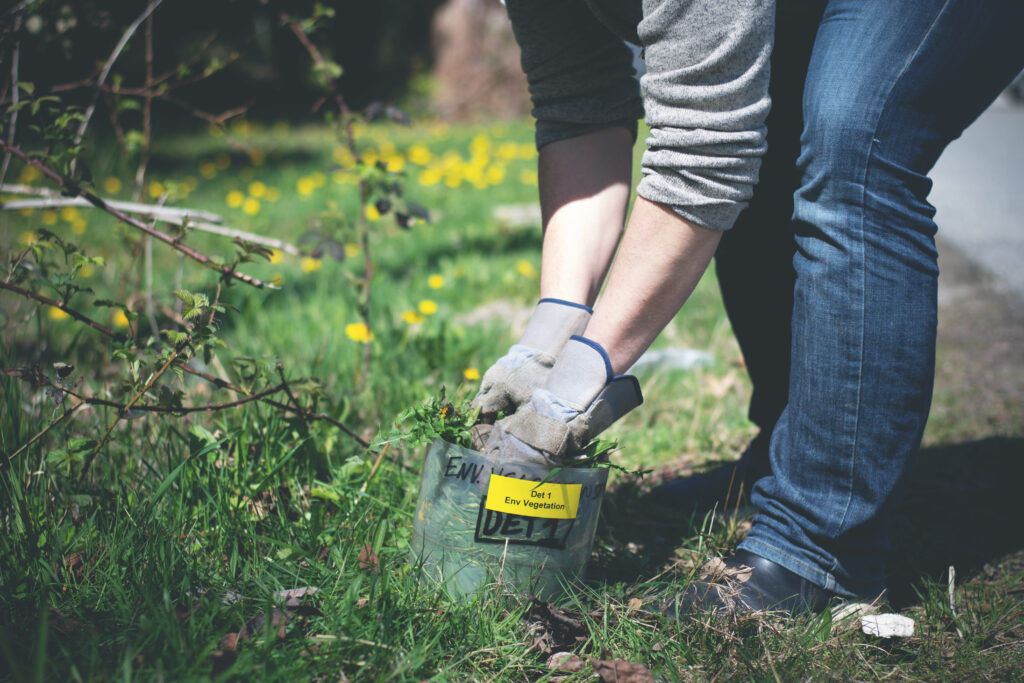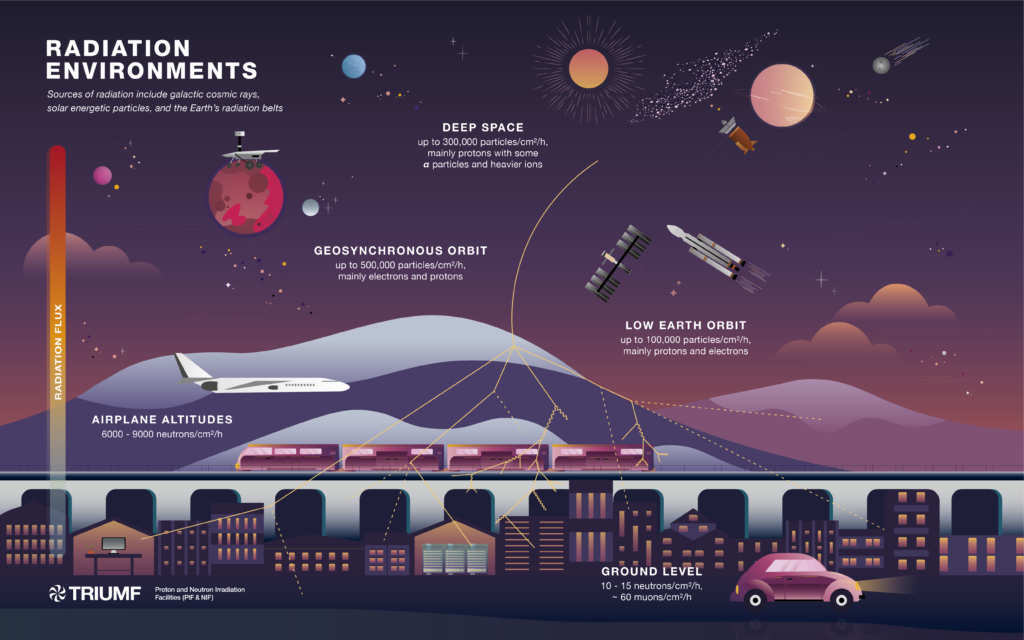TRIUMF In the Community
TRIUMF operates accelerator facilities that enable us to build a better world through science – from producing medical isotopes used in cancer scans to exploring our Universe using rare isotope beams. Safety is our most important priority. Transparency and accountability are core values.
Overview
For over 50 years, TRIUMF has been using some of the world’s most advanced technologies, including particle accelerators, targets and ion sources, radiochemistry laboratories, to expand our knowledge of the cosmos, create and process the critically-needed medical isotopes that are used in our hospitals, and advance Canadian science and innovation.
Transparent and authentic communications are central to our operations, and, under our licence granted by the Canadian Nuclear Safety Commission (CNSC), we are committed to being engaged and transparent about the nature of our work and its impact, including by reporting on our activities and making available key information with our various stakeholders and communities.
THE TRIUMF SITE
TRIUMF is located on the traditional, ancestral, and unceded territory of thexʷməθkʷəy̓əm (Musqueam) people, who for millennia have passed on their culture, history, and traditions from one generation to the next on this site.

TRIUMF AND THE ENVIRONMENT
Our site on the grounds of UBC in Vancouver is our home.
From TRIUMF’s inception, our top priority has remained the safety of the communities within and surrounding our site – our staff, our neighbours in Wesbrook Village and at UBC, and our network of national and international visitors. We conduct an extensive program of analysis and monitoring to ensure that any possible environmental impacts are either minimized or completely eliminated.

PUBLIC INFORMATION DISCLOSURE PROTOCOL (PIDP)
In alignment with Canadian Nuclear Safety Commission regulations, TRIUMF routinely updates and publishes a Public Disclosure Protocol, which addresses public interests in relation to licensed activities.
Latest update: September 2024
Event Reports
TRIUMF maintains a list of event reports related to licensed activities:

QUICK FACTS, AND BANANAS

Radiation and the environment
Remember: Natural radiation is present at all times, in all places on Earth. Every single person receives a ‘dose’ of radiation in the normal course of a day, which comes from:
- Cosmic rays above us
- Heavy metals and minerals beneath our feet
- Our interactions with people and objects
These sources collectively comprise what we call ‘natural background radiation‘.
In addition to background radiation, here are a few examples of other sources of radiation that we encounter as part of our daily lives:
- Flying in an airplane. Planes fly above the protective lower atmosphere, and are exposed to significantly more cosmic ray radiation.
- Medical and dental scans, including X-rays and CT scans, mammograms, etc.
- Living in a stone, brick, or concrete building
Radiation at TRIUMF
TRIUMF produces very, very small amounts of radiation as part of routine operations to produce radioactive particles. We use these particles:
- To search for and treat diseases, as radiotracers and as therapeutic drugs
- To explore the atomic nucleus
- To learn more about how stars burn and create elements
- And more!
The radiation dose risk TRIUMF is so slow that we generally describe it using ‘banana-equivalents’ – due to the infinitesimally small amount of radioactive potassium contained within bananas!
- One banana represents about .01 µSv of ‘dose’
- One dental X-ray is 15 µSv of dose
- In Vancouver, a typical resident receives 1300 µSv of natural radiation in one year, or a 13,000 bananas-worth of equivalent dose. In Edmonton, it’s 2400 µSv or 24,000 bananas.
- A typical 1-hour tour of TRIUMF is equivalent to about 0.5 µSv, or eating a half of a single banana.
- The maximum amount of radiation that any single member of the public could possibly receive in one year due to TRIUMF operations is about the same as 20 bananas.
To learn more about the relative amounts of radiation in the environment and how this compares to TRIUMF activities, check out this helpful XKCD infographic – Radiation Dose Chart.
Other FAQs
Who regulates TRIUMF's activities?
TRIUMF’s activities are regulated by several provincial and federal regulatory bodies, including but not limited to:
Is TRIUMF safe?
- TRIUMF has a 50+-year track record of safety, and has never had a major radiological incident.
- TRIUMF has dedicated teams and advanced radiological safety systems, including an ultra-sensitive environmental monitoring system that tracks all air and water used in any processes that involves a radiological hazard.
- We use advanced modelling to predict potential emissions to our local environment, and operate with thresholds far lower than even the federal limits set out by the Canadian Nuclear Safety Commission. Example: the maximum possible amount of dose to our nearest neighbour is routinely 25 times less than the federal regulatory limit.
Is there radioactivity at TRIUMF?
Radioactivity at TRIUMF is principally located in the sealed cyclotron. The cyclotron is located three stories underground and is shielded by three staggered layers of 100-ton concrete blocks, 4.5 meters thick.
What happens to radioactive material at TRIUMF after it's used?
The small quantities of radioactive by-products produced by experiments – mostly small bits of scrap metal, wiring, etc. – are carefully stored for a lengthy period of time in special containers. This allows the radioactive levels to decay, meaning the material becomes nonreactive and more safe. Materials that are considered ‘contaminated’ are carefully sealed and shipped off site to a regulated storage facility out-of-province.
Does TRIUMF have an environmental impact on local neighbourhoods like Wesbrook Village or Pacific Spirit Regional Park?
Independently reviewed reports show air and water quality remain consistent with environmental conditions recorded before the facility opened. Samples of storm-sewer water and vegetation are taken regularly at eight key locations around the site and confirm no effects on groundwater or surface water quality. Review the historical Canadian Nuclear Safety Commission reports here.
I'm a neighbour living near TRIUMF. Does TRIUMF's work pose any risk to my health?
No, there is no danger in living near TRIUMF.
The average Vancouverite
A single banana is about ~0.1 microSievert (µSv) of dose
In Vancouver, residents receive about 1 miliSieverts (mSv) of naturally-occurring ‘background’ radiation annually (about the same as 10,00 bananas, and still a very, very small amount). This comes from cosmic rays from space, as well as naturally radioactive minerals in the ground.
A CT scan of your body is about 10 mSv, or ~4 years of background dose or 10,000 bananas.
The average Canadian receives a total of anywhere from 2-4 mSv per year, from sources such as dental x-rays, and natural cosmic background radiation.
At TRIUMF
In comparison, the work conducted at TRIUMF contributes less than 0.01 mSv per year to a resident living directly beside TRIUMF – or 1/200th of the annual background radiation dose that the average Canadian experiences. Thus, the effect on residents of Vancouver is next to nil.
How does TRIUMF monitor its enviromental impact?
- TRIUMF conducts a comprehensive environmental monitoring program to maintain an ongoing record of environmental quality around the facility. The program includes monitoring of air, water, soil, and vegetation.
- TRIUMF has dedicated teams and advanced radiological safety systems, including an ultra-sensitive environmental monitoring system that tracks all processes that involve a radiological hazard. These practices ensure that all harmful by-products of the research are closely controlled.
- We use advanced modelling to predict potential emissions to our local environment, and operate with thresholds far lower than even the federal limits set out by the Canadian Nuclear Safety Commission. For instance, the maximum possible amount of dose to our nearest neighbour is routinely 25 times less than the federal regulatory limit.
- These records are reviewed by the federal regulators (CNSC) and are publicly available.
I still have some questions! How can I find out more about TRIUMF?
We’re happy to answer any additional questions or concerns. Please use the contact form on the Contact Us page.
